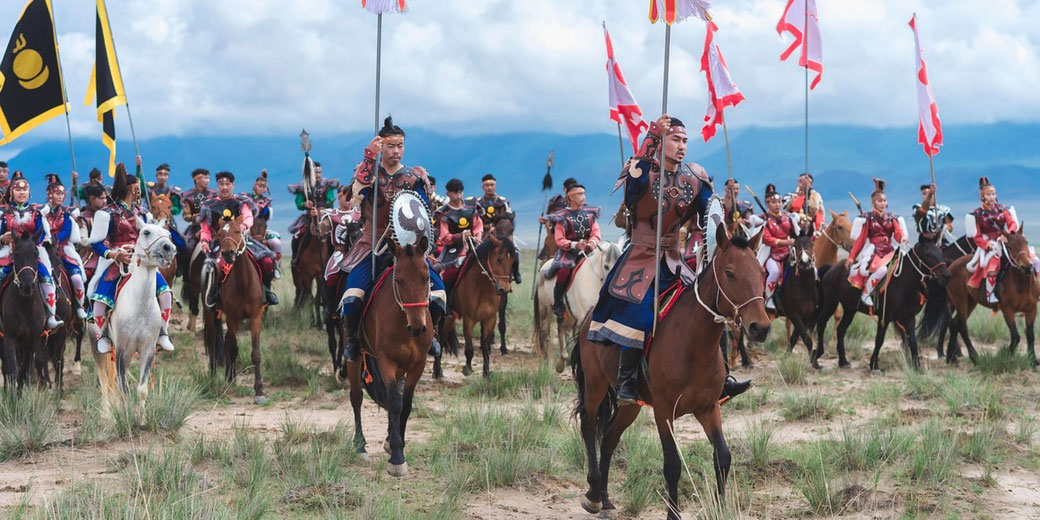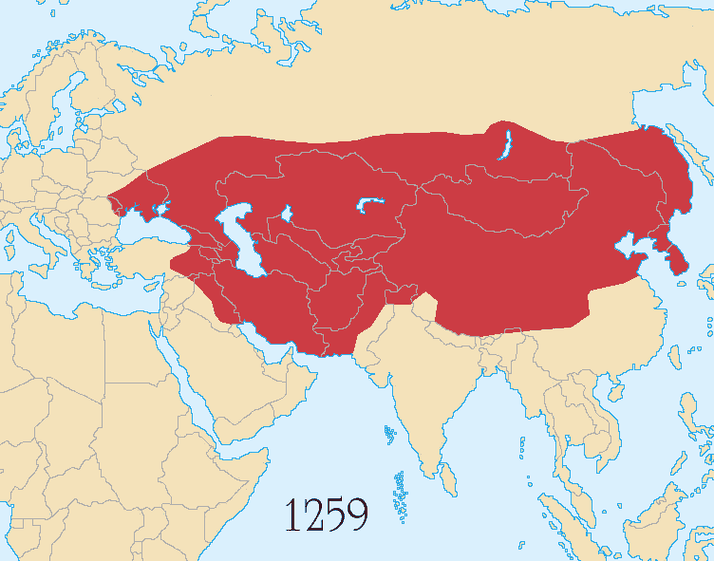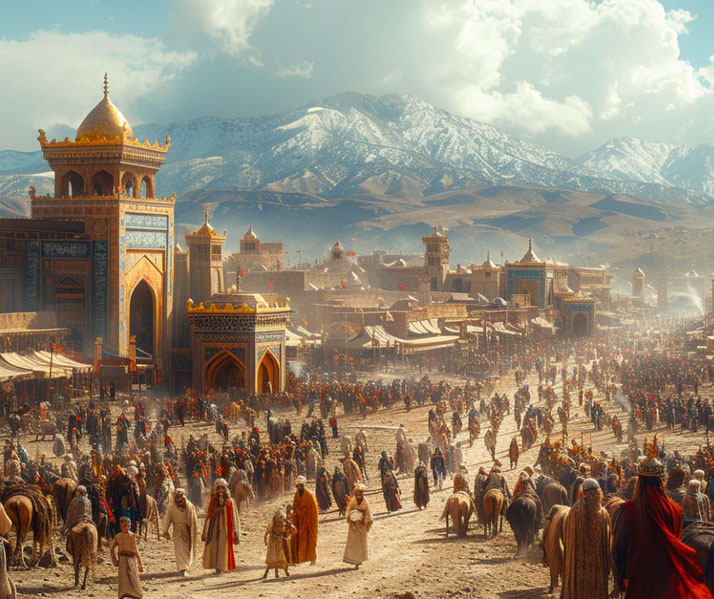The unstoppable rise of the Mongol empire

The Mongols were a culture of horse warriors that originated in the region of modern Mongolia and controlled a large empire from AD 1206, when Genghis Khan united the Mongol tribes, to 1368, when the Yuan Dynasty was overthrown in China.
The Mongol culture was a militaristic one. While this led them to rapid success on the battlefield, it also caused long-term problems with internal conflicts over power.
It was also a tribal culture, which believed that the only legitimate rulers of the Mongol empire could be directly related to Genghis Khan himself.
Genghis Khan
Militaristic horse cultures were common on the Eurasian steppes (grasslands) for millennia, but Genghis Khan's unification of the Mongol tribes made this a significant historical event.
Born as Temujin, Genghis Khan was appointed as the tribal leader in 1206 by the tribal council (known as the kurultai).
His main concern was to maintain his tribe's success in ongoing wars with other local tribes.
Genghis Khan had his first real success when he conquered the Jurchen and Tangut tribes.
This brought him into contact with northern China. From these people, the Mongols learnt about siege technology and incorporated it into their armies for the first time.
Then, in 1218, a Mongol trade mission was captured by an Iranian ruler, who killed the Mongols who were with it.
This act enraged Genghis, and he led a large invasion force against them, seeking to punish this behavior.
Using a combination of rapid cavalry attacks, sophisticated sieges, and innovative tactics and strategies, Genghis defeated every army he encountered.
Word of the unstoppable Mongol threat spread quickly, and fear of them became a useful tool to Genghis.
He would offer cities the choice to surrender immediately or face a brutal assault from his soldiers.
Many cities, hearing of the horrible fates of previous cities who had refused to surrender, gave in immediately.

By the time of Genghis Khan's death in 1227, the Mongol Empire stretched from the Middle East to Korea, including parts of Russia and India.
This vast empire was then divided into four sections to be controlled by four new khans, known as 'khanates'.
These khans were all direct descendants of Genghis, including sons and grandsons.
The separate Mongol groups developed their own names, including the Golden Horde, the Ilkhanate, the Chagatai Khanate, and the Yuan Dynasty.

After Genghis Khan
The Mongol culture still required a single ruler, the Great Khan, to be supreme over these four khanates.
In 1229, the kurultai elected Ogedei to this role.
Ogedei built a brand-new capital city at Karakorum in Mongolia and continued the Mongol's military expansion by reaching as far as modern Ukraine and Armenia by 1240.
Then, in 1241, Ogedei died. The kurultai to elect the next Great Khan was delayed for four years due to infighting between powerful Mongol rulers vying for the position.
Eventually, Guyuk was elected to the position in 1246 but died two years later.
Again, the election for his replacement was delayed due to infighting, until Mongke took the position of Great Khan in 1251.
He continued the Mongolian military aggression and successfully conquered the Song Chinese dynasty.

Mongke passed away in 1259, which led to a civil war between his brothers Kublai and Ariq Böke. After the conflict, Kublai emerged victorious and became the Great Khan.
Since the Mongols now controlled China, Kublai Khan declared himself the ruler of a new Chinese dynasty in 1271, called the Yuan Dynasty.
Kublai fought many wars during his time in power and expanded the empire to some extent, particularly in Southeast Asia.
However, he famously failed to invade Japan on two separate occasions in 1274 and 1281.
Under Kublai's rule, the Mongols adopted Chinese language and culture, and began losing much of their aggressive character.
A sign of how much Mongol culture had changed came when Kublai died in 1294.
Rather than calling a kurultai to elect his replacement, the khanate passed directly to Kublai's grandson, Temur Khan.
The collapse of the Mongols
From this point on, the Mongol Empire started to collapse. They lost control of Persia in 1335, Korea in the 1350s, and Ukraine in 1369.
Large sections of the Mongol Empire disappeared as local rulers seized power back.
The final blow came when a new Chinese dynasty, the Ming, took charge of China once again in 1368, driving the Mongols out for good.
The Mongols continued to rule over their homeland in Mongolia, but they would never rule an empire again.
The Northern Yuan Dynasty, which had continued to rule over parts of Mongolia after the fall of the Yuan Dynasty in China, was finally conquered in 1635, bringing their rule to an end.
It should be noted that the Golden Horde continued to rule over parts of Russia and Eastern Europe until the late 15th century.

Further reading
What do you need help with?
Download ready-to-use digital learning resources
Copyright © History Skills 2014-2025.
Contact via email
With the exception of links to external sites, some historical sources and extracts from specific publications, all content on this website is copyrighted by History Skills. This content may not be copied, republished or redistributed without written permission from the website creator. Please use the Contact page to obtain relevant permission.





